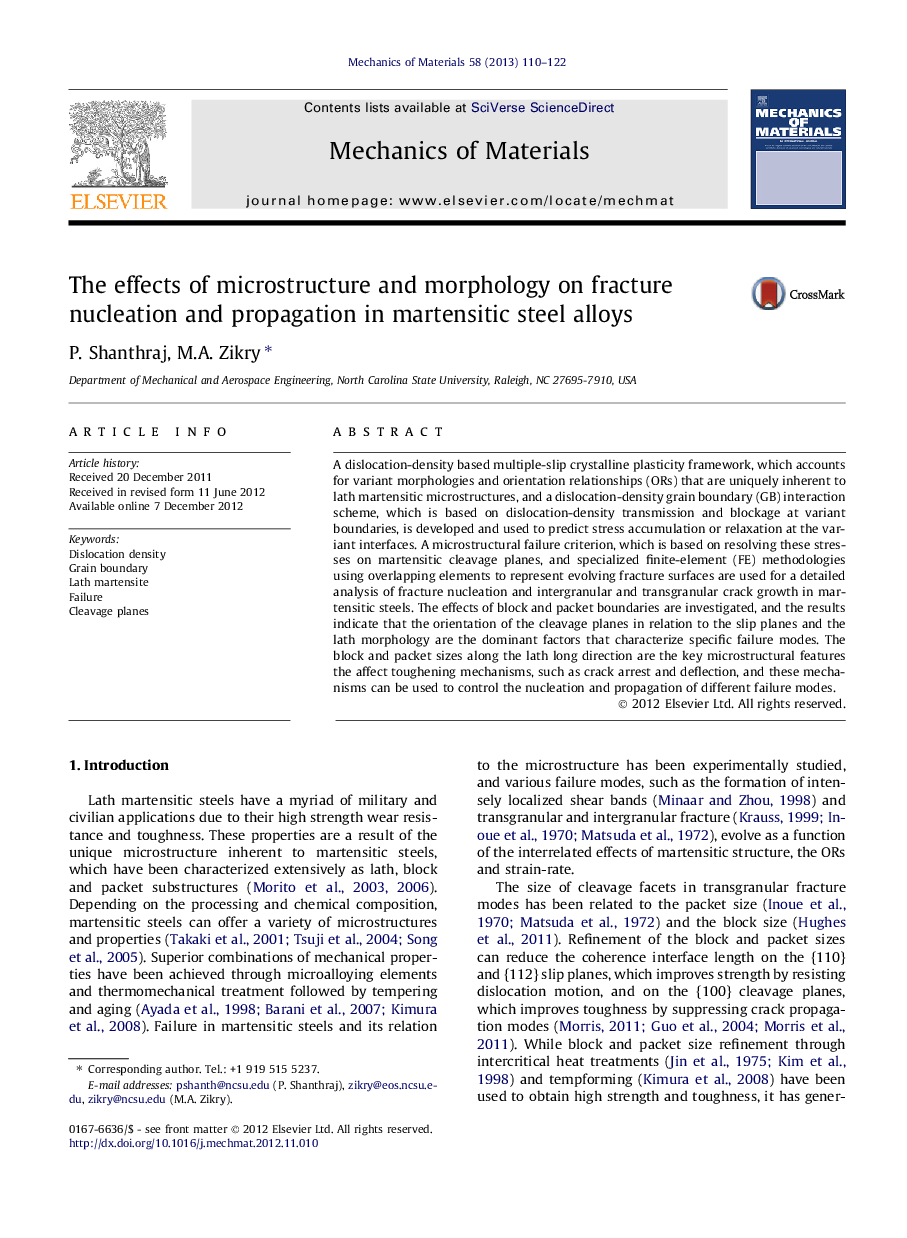| Article ID | Journal | Published Year | Pages | File Type |
|---|---|---|---|---|
| 797595 | Mechanics of Materials | 2013 | 13 Pages |
A dislocation-density based multiple-slip crystalline plasticity framework, which accounts for variant morphologies and orientation relationships (ORs) that are uniquely inherent to lath martensitic microstructures, and a dislocation-density grain boundary (GB) interaction scheme, which is based on dislocation-density transmission and blockage at variant boundaries, is developed and used to predict stress accumulation or relaxation at the variant interfaces. A microstructural failure criterion, which is based on resolving these stresses on martensitic cleavage planes, and specialized finite-element (FE) methodologies using overlapping elements to represent evolving fracture surfaces are used for a detailed analysis of fracture nucleation and intergranular and transgranular crack growth in martensitic steels. The effects of block and packet boundaries are investigated, and the results indicate that the orientation of the cleavage planes in relation to the slip planes and the lath morphology are the dominant factors that characterize specific failure modes. The block and packet sizes along the lath long direction are the key microstructural features the affect toughening mechanisms, such as crack arrest and deflection, and these mechanisms can be used to control the nucleation and propagation of different failure modes.
► New formulation for behavior of martensitic steels at quasi-static and dynamic strain-rates. ► New failure criterion based on resolving stresses on cleavage planes. ► Variation of variant orientations and distributions to control failure. ► New formulation to track dislocation-density accumulation and transmission at variant interfaces.
